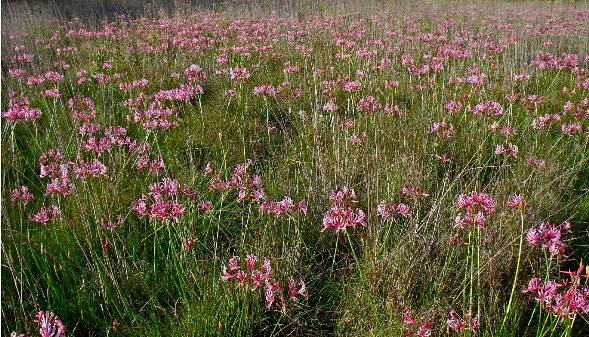Nerine angustifolia

Author: Ivan Lätti
Photographer: Judd Kirkel Welwitch
Nerine angustifolia, commonly the ribbon-leaved nerine and previously N. angulata, is a bulbous perennial reaching heights from 60 cm to 1,2 m. The bulb is about 2 cm in diameter.
The narrow leaves are ribbon-shaped, somewhat flat, from 3 mm to 8 mm wide and 30 cm long. The specific name, angustifolia, is derived from the Latin words angustus meaning narrow and folium meaning a leaf, referring to the leaf-shape.
The flowering stem, scape or peduncle is hairy, as are the individual flower stalks, the pedicels. Up to ten flowers grow in one umbel-shaped inflorescence of about 20 cm in diameter.
The irregular flowers are pink in varying shades, about 3,5 cm long. The tepals are narrow with wavy, sometimes crisped margins and twisting tips. The tepal midribs are darker coloured. The lowest tepal is often obscured by the stamens and style. The stamens cohere in young flowers, the anthers dark. Flowering happens from late summer to after midautumn.
The species distribution is in the east of South Africa from Gauteng and Mpumalanga southwards through the Free State and KwaZulu-Natal to the Eastern Cape.
The plants grow in the open in marshy grassland, also along streams. The habitat population is deemed of least concern early in the twenty first century.
This is a well-known garden plant (Manning, 2009; Pooley, 1998; Onderstall, 1996; iNaturalist; http://redlist.sanbi.org).

